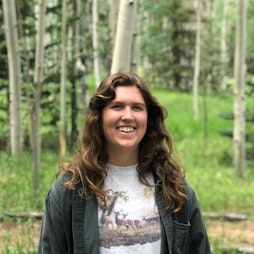Interconnectedness and Resilience: Lessons from an Aspen Grove
Aspens are incredible.
Not only do they sprout bright green leaves in the springtime, make the sound of a gentle ocean when the wind blows, and draw people to the mountains in the fall to stare in awe at their beautiful colors, they are also the largest organism by mass in the world. It’s surprising that a tree could be at the top of that list - most aspens we see here at camp are relatively thin, unassuming trees. But each of those individual aspens is part of a much larger system, and aspen groves are completely interconnected.
Within their groves, aspen trees share everything. Information, nutrients, friendship, electrical impulses… (We’re not kidding. Trees have relationships with one another! Check out the books “The Overstory” by Richard Powers and “The Hidden Life of Trees” by Peter Wohlleben for more.) When one aspen tree is in distress - it’s been infected, injured, or has a lack of nutrients - the rest of the grove makes a decision to help that tree out. In that way, the health of one aspen is just as important as the health of the whole grove. It’s all part of an interconnected system.
We have a lot to learn from a simple aspen grove. The care they show for each tree in their grove displays an incredible sense of resilience (something we’re all working through right now during stay-at-home orders). They’re willing to work through adversity to preserve their home for future generations. And, because the larger grove’s health is so important, too, they’re experts at creating and maintaining a network of support.
Aspens are natural leaders in times of uncertainty - their ability to demonstrate resilience, tolerate adversity, and build relationships can serve as a prime example of how we can be working through challenges throughout our lives.

The video below was taken at the large aspen grove just outside the main gate of camp. We often feature this grove when the new aspen leaves are growing green on the branches in the spring or when the leaves are turning beautiful shades of yellow and orange in the fall, but we think this grove is beautiful in any season!
In the video, you can see a few cool details: light brown spots on the trees where elk and deer have chewed on the bark as a source of food, claw marks on a few of the trees from bears doing some climbing and marking their territory, as well as some patches of juniper and kinnikinnick (green ground shrubbery). HT Program Director Anne is also shown hugging one of the trees - you can see how large they’ve grown in this particular grove!
